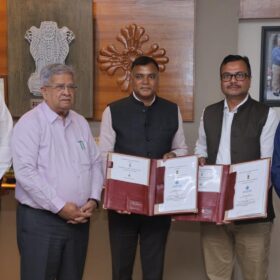Clean energy in a country like India will increase opportunities for stable income generation in a number of sectors such as animal husbandry, food processing, and more. This paradigm shift to prioritize women’s involvement in designing and using the solutions can lead us to a more inclusive approach for a better society.
All cleantech companies should ensure continuous engagement and support that will further help to maximize the utilization of clean energy technology. The changing macroeconomic trends, with focused contemporary policies and women-centric solutions, will help to drive positive change and acceptance within society.
Many solar energy companies and cleantech startups across India have ventured into this space, bringing new innovations to rural households. These startups are developing solutions for social issues ranging from drinking water crisis, agricultural issues, or other problems triggered by climate change. The startup ecosystem in India is receiving support from the central as well as state governments and their initiatives, but we need more support to reduce the dependence of India’s clean energy sector on imports from other countries.
Various new schemes of the government for distributed applications of renewable energy in rural India will further validate the value of clean technology solutions and lead to wider adoption, ultimately benefiting the rural communities and value chains. There are various challenges in scaling up these applications such as novelty and a high starting price of these technologies. These clean-tech products are perceived as high-risk purchases, especially by women users.
The relatively lower risk appetite of rural women is due to socioeconomic reasons and limited avenues to avail financing. There is a lack of established market linkages and limited mobility/networks of women outside their villages.
In India, all the hype around renewable energy and the changes it can bring to society, is mostly limited to either mega solar or wind projects or the lowering of per unit tariff achieved in auctions. Behind all these large projects, there are many people from rural India who are silently working on clean energy-based solutions that also help to bring change in the lives of the people. There are many enterprises working in this field that are focused on solar energy for urban areas with a broader goal of reducing the country’s dependency on the import of solar products from other countries. We are still dependent on other countries such as China for several parts of the renewable energy sector and its technologies. In India, we need to promote more Made in India products and increase manufacturing hubs.
To move ahead with these clean technologies in rural areas, we need to focus more on leveraging the experience of early women adopters. We should organise hyperlocal events and demos – create spaces for women to network and become aware. We should enable easy finance to purchase products. The funding companies should consider easing the loan application process. We should ensure adequate after-sales services and buy-backs. Backward and forward market linkage should be promoted. This includes finding and connecting producers to consumption hubs in urban areas.
There is also a need to develop business models that enable the people of rural India, especially women, to sell to an intermediary to regularise revenue stream. State rural livelihood missions, agriculture departments, etc., must be converged to leverage the reach of government institutions.
The views and opinions expressed in this article are the author’s own, and do not necessarily reflect those held by pv magazine.
This content is protected by copyright and may not be reused. If you want to cooperate with us and would like to reuse some of our content, please contact: editors@pv-magazine.com.








By submitting this form you agree to pv magazine using your data for the purposes of publishing your comment.
Your personal data will only be disclosed or otherwise transmitted to third parties for the purposes of spam filtering or if this is necessary for technical maintenance of the website. Any other transfer to third parties will not take place unless this is justified on the basis of applicable data protection regulations or if pv magazine is legally obliged to do so.
You may revoke this consent at any time with effect for the future, in which case your personal data will be deleted immediately. Otherwise, your data will be deleted if pv magazine has processed your request or the purpose of data storage is fulfilled.
Further information on data privacy can be found in our Data Protection Policy.